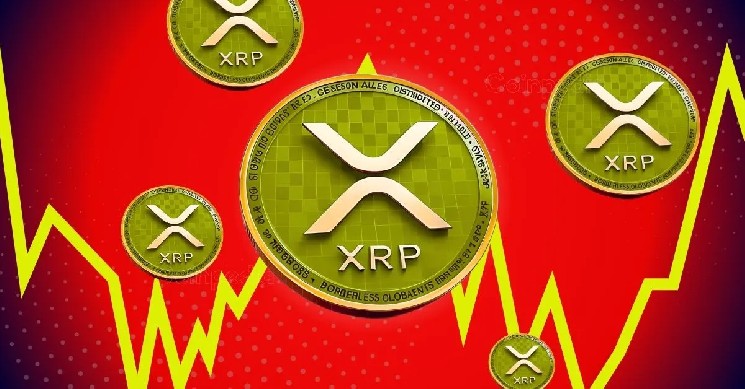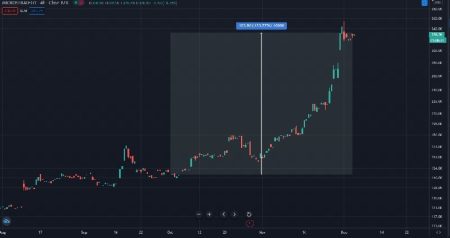XRP Price Puzzle: Why First Spot ETF Launch Led to Surprise Decline Despite Record Inflows
Market Defies Expectations as Historic XRP ETF Debut Triggers 8% Drop
The cryptocurrency world witnessed a paradoxical moment last week as XRP’s price unexpectedly tumbled approximately 8% following the highly anticipated launch of its first spot ETF on Nasdaq. This counterintuitive market reaction left investors bewildered, particularly those who had positioned themselves for an immediate rally similar to what Bitcoin and Ethereum experienced with their respective ETF approvals. The launch generated significant excitement across the digital asset community, with social media channels and trading forums buzzing with optimistic predictions. However, as trading commenced, XRP’s downward trajectory revealed a more complex market dynamic at play – one that challenges conventional wisdom about how institutional investment vehicles impact cryptocurrency valuations in the short term.
Market analysts point to a critical factor explaining this seemingly contradictory outcome: despite the ETF’s impressive day-one performance, the scale of investment simply wasn’t substantial enough to move the needle on XRP’s $138 billion market capitalization. The disconnect between expectations and reality offers valuable insights for investors navigating the evolving cryptocurrency landscape, where traditional market assumptions don’t always translate directly. This unexpected price action also highlights the sophisticated mechanics behind institutional cryptocurrency investment products and raises important questions about what truly drives price discovery in the digital asset space. For long-term XRP holders, the event serves as a reminder that market maturation often follows patterns quite different from the speculative surges that characterized earlier crypto eras.
$245 Million in First-Day Inflows Falls Short of Moving Market Despite Setting Records
The inaugural XRP ETF recorded approximately $245 million in inflows alongside almost $60 million in trading volume during its first day of trading – numbers that would be considered extraordinary for most financial products. This strong debut set a record for a new XRP investment vehicle, demonstrating substantial institutional interest and validating years of advocacy from the XRP community for mainstream financial products. However, this figure represents less than 1% of XRP’s total market capitalization, revealing why the impact on price remained minimal. “While $245 million is undoubtedly impressive for a debut product, the cryptocurrency market operates on different scales than traditional finance,” explained Dr. Marta Rivero, cryptocurrency market structure analyst at Global Digital Asset Research. “For an asset with XRP’s liquidity profile, such inflows barely register on the demand-supply balance sheet.”
The resulting price action demonstrated this principle in stark terms – rather than climbing on positive news, XRP declined nearly 8% as speculative traders who had positioned for a “buy the rumor, sell the news” scenario exited their positions. This profit-taking activity, combined with the cooling of pre-launch hype, created stronger downward pressure than the ETF’s initial buying power could counteract. Industry veterans noted that this pattern has historical precedents, pointing to similar short-term price declines following major milestone announcements for other cryptocurrencies. The data suggests that meaningful price impact would require substantially larger capital inflows concentrated within a compressed timeframe – a challenging proposition even for the most successful ETF launches. This reality check highlights the importance of scale when evaluating potential market impacts from institutional product launches in the cryptocurrency ecosystem.
Behind the Scenes: Why ETF Purchases Don’t Immediately Impact Public Exchange Prices
A critical misconception among retail investors was the assumption that ETF inflows would translate directly to large spot market purchases, removing substantial XRP from public exchanges and creating immediate upward price pressure. However, the operational structure of cryptocurrency ETFs reveals a more nuanced relationship between institutional buying and market impact. “Many investors don’t realize that ETF creation units typically source liquidity through a complex network of authorized participants and OTC markets, rather than placing large orders directly on public exchanges,” said Thomas Nguyen, Head of Institutional Trading at Meridian Digital Markets. This structural arrangement means that ETF-related purchases often bypass the public order books that determine the visible market price, especially during initial launch periods when providers have pre-positioned inventory.
Market structure analysts estimate that for XRP to experience a meaningful price breakout driven primarily by ETF demand, daily inflows would need to reach approximately $3 billion to $5 billion – roughly 10 to 15 times larger than what was observed on launch day. This threshold represents the point at which authorized participants would likely exhaust their pre-positioned reserves and OTC sources, forcing them to access public exchanges for additional liquidity. The mechanics reveal an important lesson about institutional cryptocurrency products: their market impact often manifests gradually rather than instantaneously, as the effects of consistent buying eventually percolate through various liquidity layers. For XRP specifically, this delayed price discovery mechanism means investors may need to recalibrate their timeframes when evaluating the ETF’s impact, looking toward quarterly or even annual horizons rather than daily price movements.
Liquidity Landscape: The Hidden Depths of XRP’s Available Trading Supply
Data from major cryptocurrency exchanges indicates approximately 2.4 billion XRP tokens are actively available for trading across public venues, representing roughly $5 billion in value at current prices. This visible liquidity, however, represents only the surface layer of XRP’s true tradable supply. Behind the scenes, over-the-counter trading desks reportedly maintain an additional $5 billion to $12 billion in deep liquidity reserves specifically for institutional transactions. This bifurcated liquidity structure explains why even substantial institutional buying can occur without immediately registering on price charts. “The cryptocurrency market has evolved significantly over the past five years,” explained Victoria Zhang, Chief Strategy Officer at Institutional Digital Markets. “What retail traders see on exchange order books is increasingly just the tip of the iceberg, with the majority of large-volume transactions happening through private channels that don’t immediately impact the public price.”
This market structure creates an interesting dynamic where large institutions typically pay premiums of 5% to 15% when acquiring significant positions through OTC channels, specifically to avoid pushing market prices higher. While this practice ultimately reduces circulating supply – a positive factor for long-term price discovery – its effects materialize gradually rather than instantaneously. The extensive liquidity available through these professional trading channels creates substantial buffers that must be exhausted before price discovery migrates to public exchanges. For retail XRP investors, understanding this dynamic provides crucial context for interpreting market movements following institutional announcements. Rather than expecting immediate price surges from ETF launches, a more realistic perspective acknowledges that significant buying pressure must first work through multiple layers of professional liquidity before manifesting in public price charts – a process that typically unfolds over weeks or months rather than hours or days.
Charting the Path Forward: What XRP Needs for a Sustained Breakout
Technical analysis indicators present some encouraging signs for XRP despite the post-ETF price decline, with a bullish divergence forming on the Relative Strength Index (RSI) – a pattern that often precedes potential trend reversals. However, market technicians emphasize that for confirmation of a genuine breakout, XRP would need to establish daily closes above the $2.68 level, which represents a significant resistance threshold based on previous price structures. Achieving this technical milestone would likely require coordinated demand catalysts, potentially including multiple ETF launches occurring in close succession or regulatory developments that enhance XRP’s institutional adoption narrative. “Single-product launches rarely generate sufficient momentum to overcome established resistance levels in large-cap cryptocurrencies,” noted James Harrington, Chief Market Technician at Blockchain Analytics Institute. “The real potential emerges when multiple institutional products create overlapping demand waves.”
Financial models from cryptocurrency research firms suggest that inflows of $1 billion to $3 billion concentrated within a 24-hour period could begin to move XRP upward by approximately 40 to 50 cents from current levels. More substantial capital flows exceeding $5 billion would likely produce a clearer rally with potential for sustained momentum. This analysis provides a roadmap for investors monitoring ETF adoption metrics and helps establish realistic expectations for various inflow scenarios. For long-term XRP stakeholders, the data suggests patience remains essential, as meaningful price discovery will likely depend on the cumulative impact of institutional adoption rather than single-day events. As additional XRP investment products enter the market and institutional comfort with the asset class grows, the probability of reaching these critical inflow thresholds increases – potentially setting the stage for more significant price movements in the months ahead.











